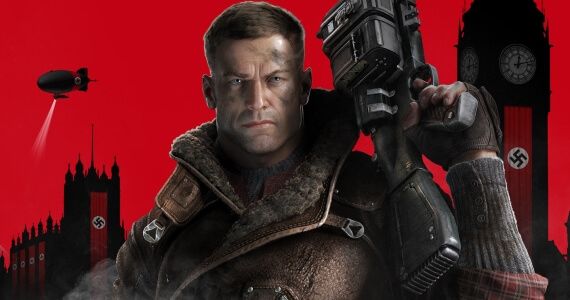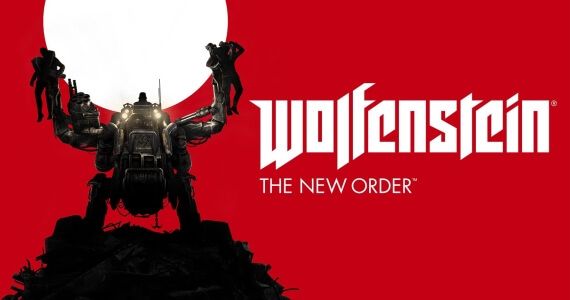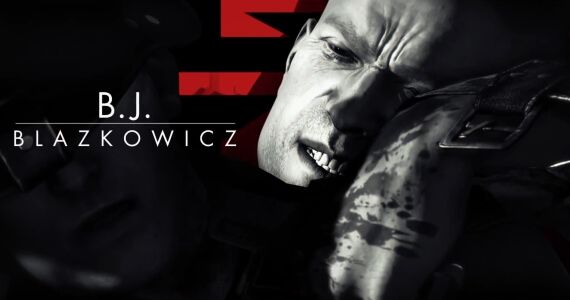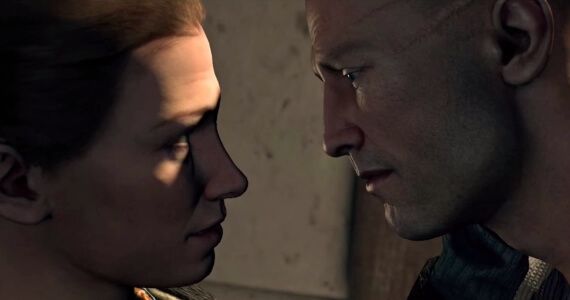In the long history of gaming, there are some franchises possessing staying power regardless of console generation, and others which seem relegated to the past. The Wolfenstein name has seemed to be the latter of late, with recent attempts at a reboot earning a mixed response. But with Wolfenstein: The New Order, the developers at MachineGames have charted a genuinely new course for B.J. Blazkowicz and his battle-hardened comrades - and it has made all the difference.
From the game's first moments, it is clear that the series' history has not been forgotten. The New Order is technically a sequel to both 2002's Return to Castle Wolfenstein and 2009's Wolfenstein, developed by Gray Matter and Raven Software, respectively. But where those games attempted to craft an alternate history of World War II - in which the German Army was experimenting with supernatural machinery and technology - MachineGames casts off much of the grandiose mythology.
Several returning characters from the prior games will prove rewarding for fans, but the story begins simply enough for any newcomer. Once again, William 'B.J.' Blazkowicz is fighting the Nazis on the front lines of the war, seeking to shatter the enemy's strongholds throughout Europe (and the mechanized soldiers defending them). One massive head wound later, Blazkowicz awakens to find that 14 years have passed as he slept, with the Nazis winning the war and becoming the world's sole superpower.
It was this alternate version of 1960 that formed the backdrop for the game's marketing, and with good reason: while the German twist on 1960s culture isn't heavily explored in the core campaign, the developers have crafted an alternate history that is surprisingly well-realized, showing few seams from beginning to end. And with a sci-fi aesthetic shaped by a 1940s vision of the future, the game dabbles in everything from European opulence to monolithic concrete super structures.
The praise most easily given to The New Order is one that is becoming harder and harder to hand out, as video game budgets and target audiences escalate wildly: the creators had a clear vision for the tone, attitude, and feeling of the game - and haven't strayed from it one bit. The confidence exuded by the trailers (focusing on dialogue, cinematics, and brief snippets of carnage) makes sense in the end, as the personality of the game's world is evenly spread across gameplay and cut-scenes alike.
The nature of the shooter's structure demands a somewhat uneven delivery, hopping between gameplay and pre-rendered cut-scenes with some frequency. Yet these shifts are less jarring than usual, as the cut-scenes are in service of the same purpose - nothing more or less grand - as the moment-to-moment gunplay. And with voice acting and direction that are consistently presented from beginning to end, the cut-scenes are a welcome dose of story, as opposed to an interruption.
With a plot, presentation, and writing style all working in tandem, the only thing asked of the actual gameplay is to not spoil the fun. Luckily, it's more than up to the task. With Call of Duty largely setting the benchmark for triple-A shooters these days in terms of both mechanics and pacing, every year brings an endless parade of imitators. In this case, spectacle is as rare as it needs to be (never overpowering the player's role in the proceedings), with elements of The New Order showing an influence ranging from BioShock to Singularity.
None of these influences seem out of place, however, since regardless of whether weapons are firing bullets or lasers, the mechanics never change. Dual-wielding machine guns or creeping silently through a battlefield with a silenced pistol or blade are equally satisfying, and unleashing a torrent of hot lead still feels (and looks) as satisfying as any game calling itself Wolfenstein should.
Developer videos promised that Blazkowicz would be equally effective utilizing stealth or mayhem, and the systems governing the player's decision to do so are more elegant than expected. Each enemy stronghold contains one commander capable of calling for backup, meaning the player can creep their way undetected to a silent kill, or take their chances with a frontal assault - and reinforcements. Both are (mostly) free of frustration, and with the game's difficulty settings able to be adjusted on the fly, it's clear that letting the player enjoy their time - not forcing them to invest it - was a key design decision.
The game isn't a masterpiece in every respect, and the style of writing and subdued visuals won't be everyone's idea of what Wolfenstein should embody. But the game's strengths are in its willingness to execute on a single vision without straying too far in any regard. The characters are a blend of ethnicities, nationalities, and sexes, without calling out the fact at any point. The elements of romance, fatality, or self-sacrifice never overstay their welcome, simply serving to support the plot.
More than anything, the Nazi-controlled world the game creates colors the entire proceedings, making the game's hero seem more of an 'underdog' than most games starring a one-man killing machine achieve. Blazkowicz is a soldier (and a good one at that), and with his friends behind him, they set out to topple an empire. The resulting story is as entertaining to watch as it is to play, and far more inspired and well-executed than any expected it to be.
MachineGames has accomplished their task of bringing some dignity back to the franchise, delivering a shooter that gets more right than many of its better-funded, blockbuster peers. Shooter fans may have had their doubts, but would be wise to play The New Order sooner rather than later.
__________
Wolfenstein: The New Order releases May 20, 2014 for the PC, PS3, PS4, Xbox 360, and Xbox One. We played the Xbox One version.
Follow Andrew on Twitter @andrew_dyce.




